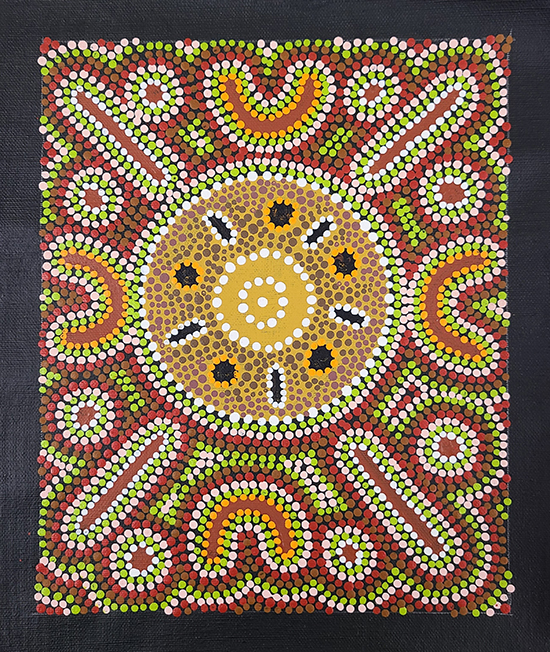Aboriginal Australian Dot Painting

Aboriginal Australians have one of the oldest continuous cultures in the world. Their art, going back to ancient rock and cave paintings believed to have been made by ancestral spiritual beings, is an important part of their heritage. Dot painting has its roots in these ancient rock paintings as well as in sacred ceremonies where designs are drawn in the sand and participants wear body paint. The designs were meant to be ephemeral and were intentionally hidden from the uninitiated – the sand was smoothed over, and body paint was washed off.
Dot painting emerged into the greater public eye in the second half of the 20th century as the mediums shifted to more modern ones like canvas and board. However, it is important to recognize that this shift does not represent the establishment of a new art form, but rather the evolution of ancient traditions.
Dot paintings demonstrate a deep connection to Dreamtime, or the Dreaming, a philosophy and narrative of sacred creation stories explaining the origin of the universe and interconnectedness of all people and things. It is passed down through stories, songs, and ceremonies, linking Aboriginal Australians to their past. Dot painting as we know it today evolved in part to disguise the sacred stories and symbols represented in the artists’ work.
This piece was painted by Aboriginal Australian artist Mingi May Barnes, who is from the Wangkatjungka Aboriginal community, in the Kimberley (northern) region of Western Australia. She sells her work in art galleries, where this piece was purchased in the early 1990s. Her art is strongly influenced by the Dreaming and is an interpretation of the many stories told by Aboriginal Australian in the Western Desert area. Her works are filled with the ochre colors of the desert.
This painting includes many symbols. The concentric circles in the middle represent a meeting place or campground. The U-shapes represent women, identifiable because the long oval shapes nearby represent digging sticks. Men would be represented with other implements, like boomerangs, instead. U-shapes are chosen because they represent an aerial view of a person sitting cross legged. The circles next to them represent children. Below this surface level symbolism, the painting also has deeper meanings connected to sacred stories and beliefs.

